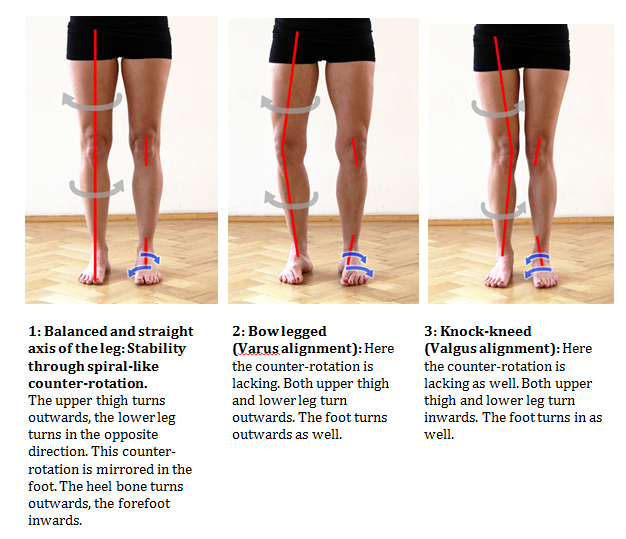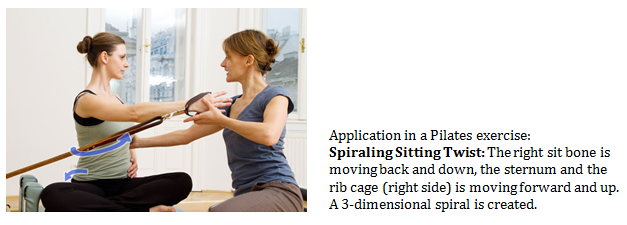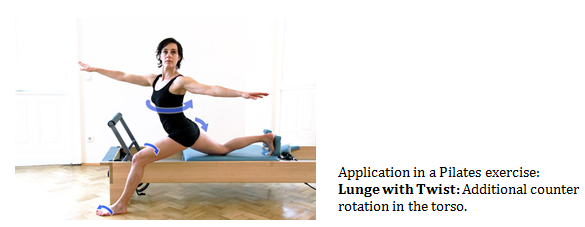1. Spiraldynamik® – the architecture of movement
At one point in our history we decided to get up. We started to walk and run on two legs. In doing so, we have also chosen a certain way of locomotion.
Yes, we also could have learned to hop and jump through the savannahs and perfected it like kangaroos did. If that had happened, functional sportswear would probably look different than it does today. But we decided otherwise. We have chosen a movement organization, which we call “walking” and “runnin”. But did we choose correctly? Was it wise to start moving from one leg to the other leg constantly striving for balance…?
In order to help us, our movement intelligence found an ingenious solution for us: the spiral. What? You cannot imagine us spiralling through our daily life? Well, that is what we do, so let me explain:
First let us look back in our history: Amphibians, our ancestors from which we evolved, already made use of a counter-rotation for their limb movement organization. The amphibian “Tiktaalik“, the missing link between a fish and a frog, lived 380 million years ago. In its anatomy the counter-rotation principle was already realized: its back fins turned into an outer rotation to push (like legs), its front fins turned into an inward rotation to pull (like arms). Thus, while the Tiktaalik’s spine movement was still dominated by lateral flexion, its limb movement organization had clearly defined directions of rotations.
So how does that relate to us? Human beings are running on two legs while their spine rotates alternating to the left and to the right. Whereas before the spiralling occurred only in the limbs, now for the first time in evolution the spiral movements were established in both the spine and the limbs.
The principle of the spiral proved itself to be very economical for moving forward: it provided a high structural stability and functional mobility while at the same time being lightweight in its construction. Pressure that comes from the outside (gravity and ground reaction force) can be well centred around our central axis by the spiral organization of the trunk and can then be easily transformed into kinetic energy.
So we move forward by spiralling around our axis. We walk and run by an alternating rotation of the upper torso countering the rotation in the lower torso. But the spiral is not only limited to just our torso. With careful observation, the principle of the spiral can be repeatedly found throughout our body: the leg with its outward rotation of the upper thigh countering the inward rotation of the lower leg; the foot is a sophisticated construction of the heel counter-rotating against the forefoot. There are many more examples shown in the structure and organization of our physical architecture. Through the centuries, our bodies adapted brilliantly to the requirements of the evolutionary process.
2. Spiraldynamik® – a new concept of movement science
Together with the French physiotherapist Yolande Deswarte, the Swiss doctor
Dr. Christian Larsen founded the “Spiraldynamik®”. This concept was developed by observing the development of children, as well as biological structures and organizational principles of nature. Zürich is their headquarter and in German speaking countries the Spiraldynamik® enjoys great popularity in the therapeutic community, as well as the movement pedagogical field.
Though the Spiraldynamik® is not another training-method like Yoga or Pilates, it is a fundamental tool that can be applied to all trainingmethods. The Spiraldynamik® provides an explanatory model of movement, it is a user´s manual for the human body by explaining its structural and organizational principles, such as the principle of the spiral, bipolarity, the uprighting and the arch. The basic functional principles and connections of each movement unit (for example the movement unit of the shoulder, arm, hand, hip, leg, foot, trunk) is analyzed using this functional principles.
3. Pilates and Spiraldynamik®
When I first got in contact with the concept of Spiraldynamik®, a whole new world opened to me, causing me to rethink my entire Pilates training. Was I truly moving economically? Did I really use the full potential of my body? But as I continued with my exploration, I realized that Pilates already integrates many of the Spiraldynamik® principles. For example, I found the uprighting, the centering and the bipolarity of movements in Pilates. All these principles are an important base for the trunk to spiral to the left and to the right while walking or running on two legs.
So my next step was to analyze all exercises and to find out that I can easily find and apply these principles into my Pilates practice. Some seemed already familiar to me (the counter-rotation of the upper leg contra the lower leg), some were very new (the spiral coordination of arm-movements).
As my knowledge evolved, I started to include more rotational exercises into the Pilates program. It widened my Pilates repertoire a great deal by including more exercises for rotation of the spine or creating variations of the classical set-up.
In general, I brought more body awareness and proprioception into my program. I looked for ways to move more economically. As human beings, we are carrying the full potential of optimal movement coordination in our structures. Using the full potential of our anatomical structure means moving economically, as well as safely. Of course, this is a lifetime study, and I have found that Spiraldynamik® is a great tool to take me and my clients deeper to the understanding of optimal movement.
Anna Schrefl
Anna Schrefl studied contemporary dance at the Amsterdam School of Art and the Modern Dance Academy in Rotterdam. In 2001 she finalized her Pilates training in New York with Romana Kryzanowska. She completed her Pilates Teacher Trainer training under Ton Voogt and Michael Fritzke and established in 2006 the “Pilates System Europe – Certification Program” with the supervision of Ton and Michael. Anna gives company training and seminars for classical and contemporary dancers, actors, and musicians for over 15 years. She teaches special seminars for Pilates trainers around Europe and also works as a freelance choreographer. Since 2008 she is a certified specialist in Spiraldynamik® and completed her advanced teacher training in 2013.
Anna Schrefl is the director of Pilates System Europe® in Vienna.






